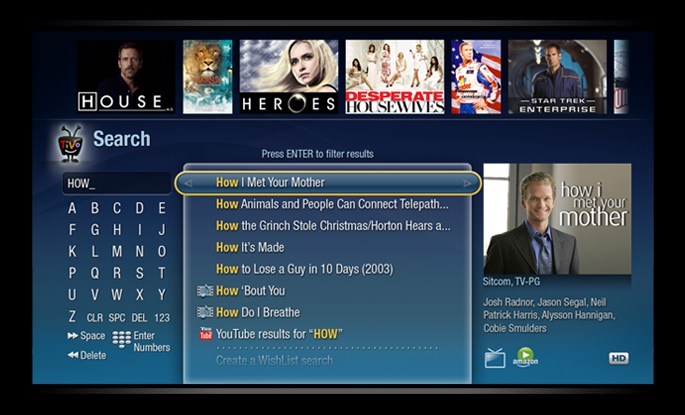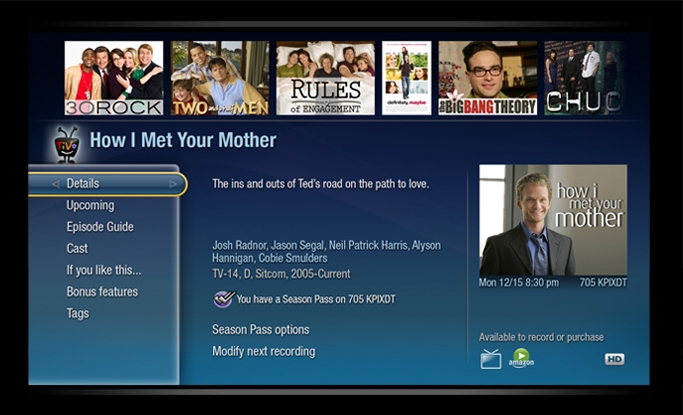by
천계성
readwriteweb 에서 선정한 작년 한해 top 어플리케이션의 모음입니다.
웹상에서 공기의 개념이 되고 있다는 sns를 기반으로 한 서비스들이 가장 많이 눈에 띄이고, Qik과 같은 모바일 활용 사이트들도 조만간 우리나라에서 마케팅의 용도로 활성화 되지 않을까란 생각도 들었습니다.
(아시는 사이트는 스킵하시구요~^^)
작년 한해 대히트를 친 어플들을 만나보시죠.
한글: http://webito.tistory.com/
영문: http://www.readwriteweb.com/
Top 10 Consumer Web Apps of 2008
1. Twitter
 Twitter is the de facto leader of the microblogging scene, a realm usually rife with witty repartee between leading social media consultants and Web 2.0 developers. But when household names like Lance Armstrong, Richard Branson, Al Gore, Shaquille O'Neal, Britney Spears, and politicians across the US started using it, this year, it was clear that our selection as the Best Web LittleCo for 2007 had grown up - and entered the public consciousness.
Twitter is the de facto leader of the microblogging scene, a realm usually rife with witty repartee between leading social media consultants and Web 2.0 developers. But when household names like Lance Armstrong, Richard Branson, Al Gore, Shaquille O'Neal, Britney Spears, and politicians across the US started using it, this year, it was clear that our selection as the Best Web LittleCo for 2007 had grown up - and entered the public consciousness.
Twitter was a constant fixture on ReadWriteWeb this year from its use as a source of news to its growing use as a customer service channel. But it wasn't without its hiccups. Midway through the year, Twitter - and its more and more frequent showings of the Fail Whale - was rapidly becoming persona non grata. In June 2008, Amazon's Jeff Bezos poured more cash into the service. And with the US elections, Twitter proved its mettle, becoming a critical forum for debate on the issues at hand.
2. Firefox
 November 2008 marked the fourth birthday for Firefox, arguably one of the most successful open source projects and clearly the most popular Web browser that users have to actually install. In 2008, more and more of the consumer population gravitated to the browser that strives to deliver the Web the right way.
November 2008 marked the fourth birthday for Firefox, arguably one of the most successful open source projects and clearly the most popular Web browser that users have to actually install. In 2008, more and more of the consumer population gravitated to the browser that strives to deliver the Web the right way.
Firefox has continued to grow in popularity throughout 2008, but it was the download day for Firefox 3 that began to truly turn heads. Site crushing traffic to download a Web browser? Believe it. So much traffic, in fact, that it set a world record. That, and a number of other factors, had Firefox reaching a 20% market share in October of this year.
3. IntenseDebate
 IntenseDebate - dubbed by RWW as the "the sophisticated blog comment system with the silly name" - provides a commenting add-in for blogs and Web sites that allows users to better manage their profiles and comments across multiple conversations. It also supports OpenID.
IntenseDebate - dubbed by RWW as the "the sophisticated blog comment system with the silly name" - provides a commenting add-in for blogs and Web sites that allows users to better manage their profiles and comments across multiple conversations. It also supports OpenID.
In 2008, distributed commenting was still a very young space with no clear leader. But when IntenseDebate appeared as the comment system on US President-elect Barack Obama's change.gov, it stepped into the public eye. Now, thousands of people are using the commenting system. This makes Automattic - the company that manages the development of WordPress - look pretty insightful for acquiring IntenseDebate this year.
4. Hulu
 If Hulu - a joint video content sharing venture between NBC Universal and News Corp. - is any indication, traditional mainstream media companies are beginning to get this whole "online thing."
If Hulu - a joint video content sharing venture between NBC Universal and News Corp. - is any indication, traditional mainstream media companies are beginning to get this whole "online thing."
And with good reason. In 2008, Hulu shed its ugly duckling image and came into its own and was projected to earn a staggering $90 million in its first year. How? Again, the true turning point was the US elections. Consumers turned to Hulu as much for the political content, as for the satire - like Saturday Night Live and The Daily Show. Now, consumers are hooked and that affinity for the service is showing no sign of slowing.
5. Ning
 Ning is a service designed to help anyone build a social network about anything that interests them. And in 2008, consumers flocked to the site to do exactly that - to the tune of a new social network created every 30 seconds.
Ning is a service designed to help anyone build a social network about anything that interests them. And in 2008, consumers flocked to the site to do exactly that - to the tune of a new social network created every 30 seconds.
As of October 2008, Ning was host to half of a million networks. And it will only continue to grow in the consumer space. Why? Much like Twitter, Ning has begun to attract celebrities who find the service a viable way of interacting with fans. Plus, with its integration of OpenSocial, Ning gains access to tech savvy consumers on a variety of social networks who already understand the dynamic.
6. Last.fm
 Any app that incorporates consumer media and makes it easier to use is a winner. And that's why Last.fm, the socially driven music recommendation service, is a shoo-in for top consumer apps of 2008.
Any app that incorporates consumer media and makes it easier to use is a winner. And that's why Last.fm, the socially driven music recommendation service, is a shoo-in for top consumer apps of 2008.
We at RWW spend a great deal of time focused on Last.fm - from the most popular songs to mashups created using its data to visualizing Last.fm friends networks - because we spend so much time on Last.fm. One thing is for sure with its redesigned site, the growing presence on mobile platforms, innovative programs, and interesting features, Last.fm is sure to continue gaining more and more fans.
7. Meebo
 Meebo, always a favorite here at RWW, provides a centralized instant message platform that's accessible from any Web browser. While they've always been popular with the overly connected crowd, 2008 marks the year where Meebo has a growing opportunity to become a consumer favorite, as well.
Meebo, always a favorite here at RWW, provides a centralized instant message platform that's accessible from any Web browser. While they've always been popular with the overly connected crowd, 2008 marks the year where Meebo has a growing opportunity to become a consumer favorite, as well.
In March 2008, we saw Meebo as having the opportunity to bring Web IM to the mainstream. Throughout the year, they continued to improve - including adding a revenue stream. And by October, Meebo had begun to roll out a partner program that will place its functionality on niche consumer sites throughout the Web. Even if consumers don't recognize Meebo yet, they will soon.
8. Mogulus
 If YouTube taught people about online video and Ustream taught folks how to stream video, then Mogulus will be the service that teaches consumers how to broadcast online. And in a burgeoning HD market, where users are coming to expect crisp video and audio quality even online, Mogulus stands to become the streaming service of choice for serious videophiles.
If YouTube taught people about online video and Ustream taught folks how to stream video, then Mogulus will be the service that teaches consumers how to broadcast online. And in a burgeoning HD market, where users are coming to expect crisp video and audio quality even online, Mogulus stands to become the streaming service of choice for serious videophiles.
In June 2008, we reported that Mogulus - which launched in May 2007 - was already reporting 4.5 million uniques. By September, that number had grown nearly 30% to 5.8 million. Clearly, the numbers are on the upswing.
9. Qik
 Qik, the service that allows users to stream video to the Web from a mobile handset, may not be as prevalent on the consumer radar as some of these other apps. But it's safe to say it will be. While services like Mogulus have focused on the quality of the video stream, services like Qik have focused on the converse: the ability to stream content with devices that consumers are already carrying around. And that will be their key to success - the ability to deliver more content while hauling less gear.
Qik, the service that allows users to stream video to the Web from a mobile handset, may not be as prevalent on the consumer radar as some of these other apps. But it's safe to say it will be. While services like Mogulus have focused on the quality of the video stream, services like Qik have focused on the converse: the ability to stream content with devices that consumers are already carrying around. And that will be their key to success - the ability to deliver more content while hauling less gear.
At the beginning of the year, we wondered if Qik might be one of the breakout apps at SXSW 2008 given the number of tech types participating in its early testing. By the middle of 2008, Qik had opened its beta to more participants. And since that point, they've focused on making the service available on both mass market phones and some smart phones. No doubt, the ability to shoot video with that phone in your pocket will be as compelling to consumers as taking photos - if not moreso.
10. Cooliris
 Cooliris may be the least obvious - and least recognized - of our consumer app selections, but it has that certain something that makes us sure its going to be popular with the less technically savvy. For those of you who haven't had the chance to try it, Cooliris is a browser extension that provides a 3D environment for thumbing through visual sites - like photo and video sites. What's more, it makes it fun. And that's why consumers will continue to be attracted to it.
Cooliris may be the least obvious - and least recognized - of our consumer app selections, but it has that certain something that makes us sure its going to be popular with the less technically savvy. For those of you who haven't had the chance to try it, Cooliris is a browser extension that provides a 3D environment for thumbing through visual sites - like photo and video sites. What's more, it makes it fun. And that's why consumers will continue to be attracted to it.
We covered Cooliris - then called PicLens - in February 2008, finding it "a lot of fun to play with and makes searching and viewing images on the web very enjoyable." By June 2008, they had added Amazon items and YouTube videos. Even the iPhone got the Cooliris treatment with the Cooliris iPhone app. Most recently, Cooliris has unveiled features that allow users to personalize selections - and that allows Cooliris to sell more advertising. Visual browsing is still coming into its own, but Cooliris is leading the charge in a way that consumers will embrace.









